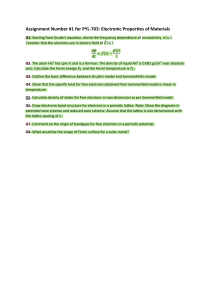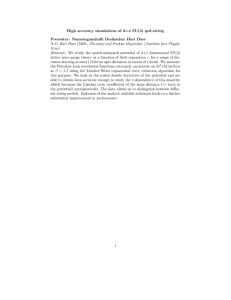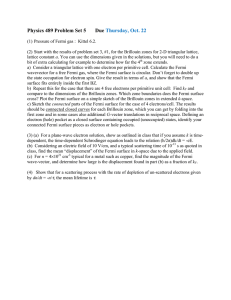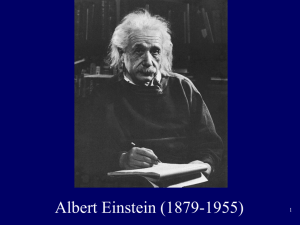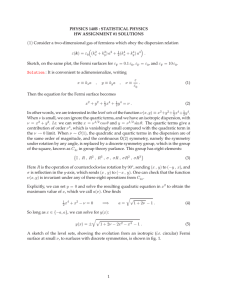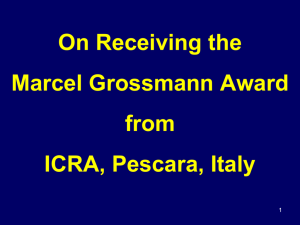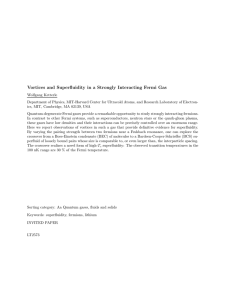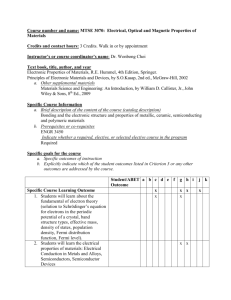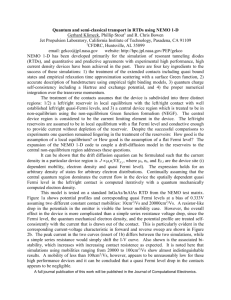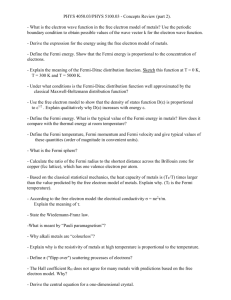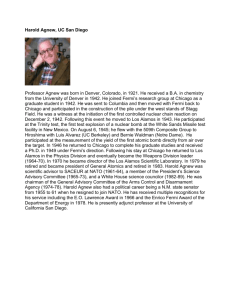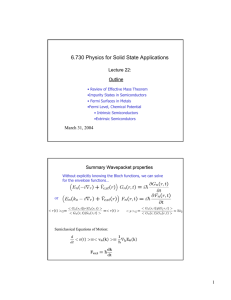2014.3.7
advertisement
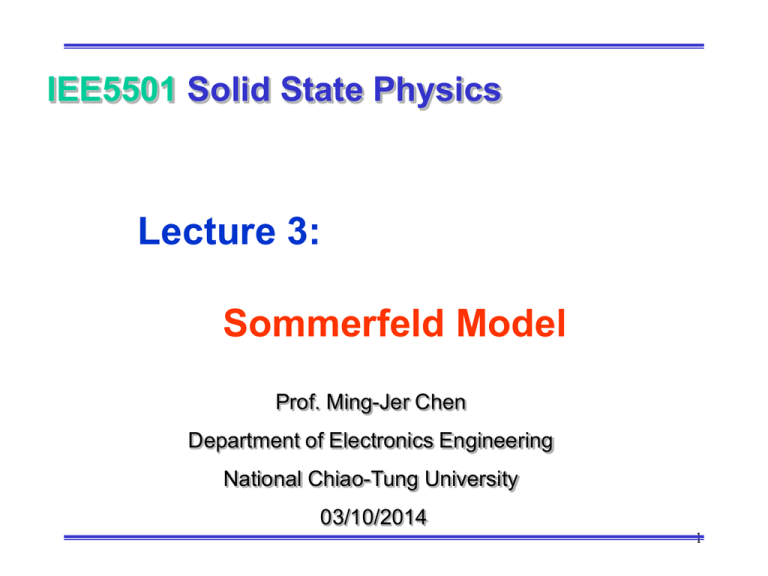
IEE5501 Solid State Physics Lecture 3: Sommerfeld Model Prof. Ming-Jer Chen Department of Electronics Engineering National Chiao-Tung University 03/10/2014 1 From Wikipedia, the free encyclopedia Paul Drude (1863-1906) Arnold Sommerfeld (1868-1951) Hans Bethe Lev Landau (1906-2005) (1908-1968) (Nobel Prize in Physics 1967) (Nobel Prize in Physics 1962) (Sommerfeld was Bethe’s doctoral advisor) In 1900 Drude developed a powerful model to explain the thermal, electrical, and optical properties of matter. In 1933, Arnold Sommerfeld and Hans Bethe modified the Drude model, simply by replacing the classical gas (follow Maxwell distribution) with a Fermi gas (Quantum Mechanical version of an ideal gas; follow Fermi-Dirac distribution), leading to the Drude-Sommerfeld model. In 1957, Lev Landau proved that a gas of interacting particles can be described by a system of almost non-interacting 'quasiparticles' that, in the case of electrons in a metal, can be well described by the Drude model. 2 (So, the Drude-Sommerfeld model is popular to study advanced devices like graphene FET.) Given an electric field Can you derive it, starting from the velocity distribution f() in a Fermi spherical gas? (Care must be taken.) 3 Still under Independent Electron Approximation Free Electron Approximation Relaxation Time Approximation Different view of electron transport, Only by Fermi velocity at Fermi surface So, focus on the fastest (Fermi) electrons only. How many of energies within the sphere, even at T = 0K? 4 Derive a velocity distribution for a Fermi sphere 5 As claimed in the textbook, the resulting mean free path in a Fermi gas picture appears to be reasonable. But, do you think if it is right? 6 On the Fermi gas 7 Energy and Entropy related quantities 8 Calculated quantities are still insufficient to explain data 9 Dimensionality 10
